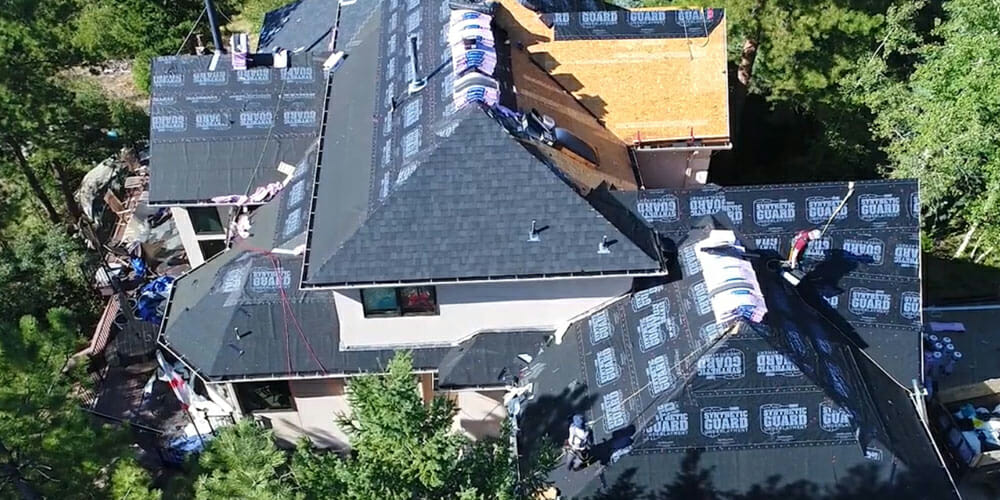Leaky roofs can have a wide variety of causes but the effects are always the same: expensive repairs. The longer you wait to fix a leak in a roof, the more expensive the repair will be and the more dangerous it can be for your health. This article will explain many roof leak causes, what type of effect they can have on your home and your health, and the steps you can take to fix your leak and prevent future leaks.
To jump straight to the section that you think you may be dealing with, click any of these items below:
Missing Shingles
Missing Silicone
Nail Popping
Inadequate Ventilation
Inadequate Insulation
Missing Drip Edge
Most Common Causes
Missing Shingles
Missing roof shingles are one of the most common causes of a leaky roof. The primary role of the shingle is to protect the underlayment paper, sometimes referred to as “felt” from the elements. When the underlayment is exposed to the elements, including UV light from the sun, it begins to break down. The primary role of the underlayment is to shed rainwater and meltwater down the roof structure and into a collection system like your gutters. When the underlayment begins to break down, it can become absorbent (in the case of old felt paper) or it can break apart to reveal the wood decking underneath. At this point, there is nothing stopping that water from entering your attic and eventually creating the stains you see on your ceiling.
So, how do shingles disappear?
Glad you asked. There are two main ways that you begin to lose shingles. The first is in the very beginning of the roofing process. If your roof was installed in too cold or too windy of temperatures, it is going to have a dramatic impact on the performance of your roof. Asphalt shingles do need to be installed in 40 degree F temperatures and rising. Below this threshold and the tar on the underside of each shingle that is used to adhere the layers together won’t soften enough to become an adhesive. Then the wind picks up and takes your shingles for a ride. If your roof was installed during a high wind event, then that wind can introduce dust and debris to the underside of your shingles, effectively coating the tar and making it difficult for the tar to stick to anything but the dirt. Imagine using a lint or pet hair roller. After a while, despite the sticky residue still being present on the roller, there is just too much lint or pet hair for it to stick to anything.
The second way you begin to lose shingles is from using a low wind-rated shingle. Not all shingles are created equal and while some of them perform at the top of their class in wind resistance, others fall to the bottom. Unfortunately, many of the roofing shingles that are used for developed communities are of the lower quality so that the builders can save some money. Higher-end wind rated shingles are either heavier or use a proprietary construction method specifically designed to improve wind-resistance. Notable products are the Duration series shingles by Owens Corning, or the Dynasty and Nordic series shingles by IKO. These products use a reinforced nailing strip that helps to grab onto the nail head during high-wind events. Personally, I prefer the IKO brand as it has proven to outperform all competition in it’s class and they manufacture all of their own raw materials, so their products don’t hold as high of a price tag.
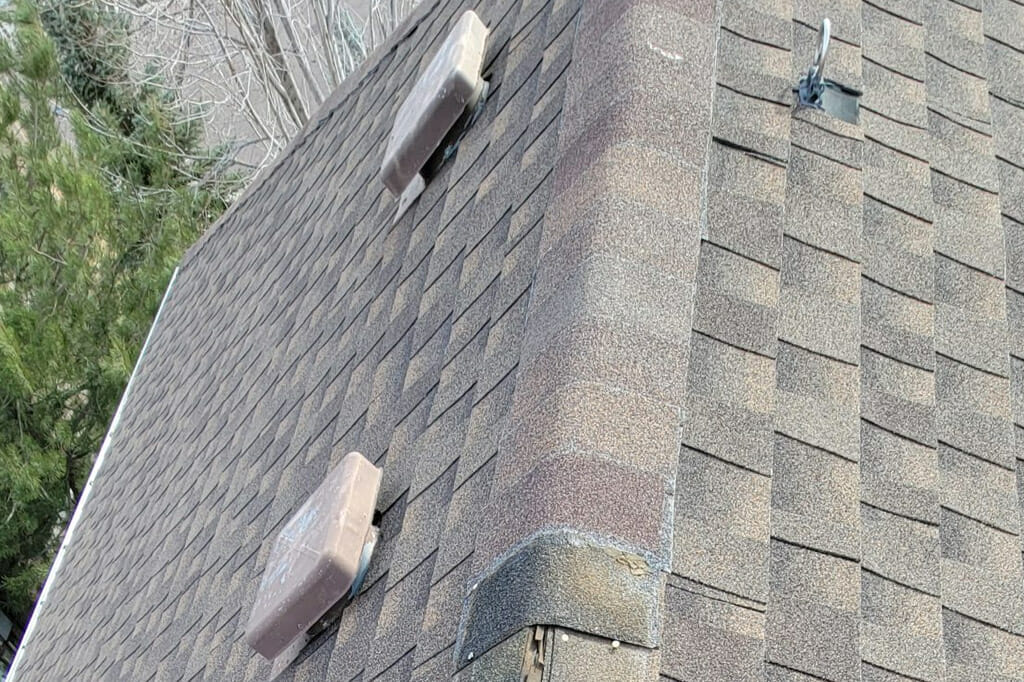
Missing Silicone
Silicone is used to seal nail heads or the edges of flashing. Silicone is a vital part of any roof but by nature, is usually the first item to fail. The sun’s rays are harsh on silicone and over time, it will degrade and expose the nail it is covering or the seam where flashing meets your siding. Because silicone is used to waterproof problem areas, whenever it fails, it is now introducing an avenue for water to penetrate your roof.
We recommend that you have your roof inspected at least every other year to stay on top of this issue. These leaks tend to be slow but sometimes the slow leaks will cause the most damage before being detected. We offer a maintenance program with every roof replacement.
![]()
Nail Popping
Nail popping is when the nails used to adhere the shingle to the roof decking begin to move upwards, pushing the shingle up or punching through the shingle all together. As temperatures fluctuate, the wood decking will expand and contract. This motion will push the roofing nails upwards. Either the shingle will be raised with the nail, creating separation between shingle layers, or the nail head will penetrate the shingle, causing an avenue for water to enter your roof assembly. This is seen more on older roofs, but that is not always the case.
There are a few ways this can be prevented, but none of them are an absolute guarantee. By using ring-shank roofing nails, the nails will have more grip in the roof decking and this will help counteract the upwards push from expansion and contraction. Over time, however, even this method doesn’t always work. Another method would be to use thicker shingles. 3-tab shingles are some of the thinnest styles of roofing material that is still allowed to be applied to a sloped roof system. They’re popular due to their low-cost, but you also sacrifice durability with that. It is very easy for roof popping to penetrate these types of shingles. Architectural shingles are better at preventing this due to their multiple layers of material contributing to their thickness and weight. Luxury asphalt shingles are the best to prevent this due to their increased thickness and weight compared to even the general architectural shingles.

Inadequate Ventilation
Ventilation is unfortunately an overlooked issue on most homes. Most building departments don’t require you to update your ventilation to meet current building codes no matter the condition it is currently in. The code generally states that “As long as the building ventilation met code at the time it was constructed, then it is not required to be updated.” The problem is, they never check if it was up to code at the time of construction. Another issue with that is as technology advances, roof vents become more efficient.
When ventilation is inadequate, it can contribute to condensation build up in the attic space. The condensation will accumulate under the roof deck and then drip onto you insulation (assuming you have insulation). When your insulation gets saturated by water, it will begin to transfer that moisture to your ceiling and create water spots. In addition, it will begin to make your insulation inadequate.
This can be fixed by assessing your attic space and calculating the maximum amount of ventilation that can be allowed for your home. This may require either adding intake vents, exhaust vents or both.
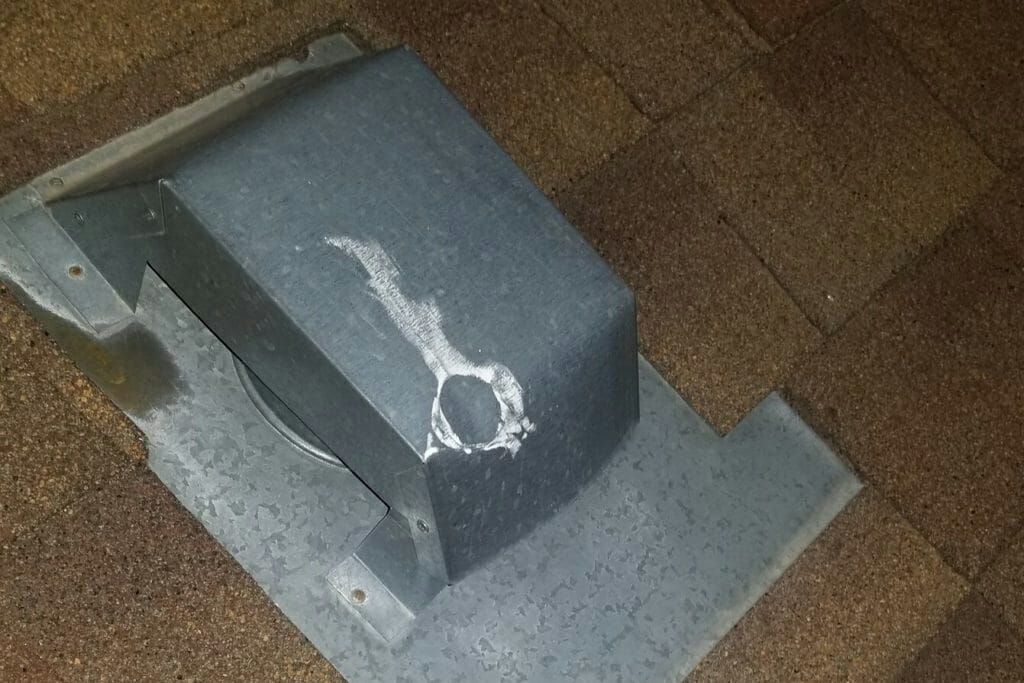
Inadequate Insulation
Insulation is another overlooked part of most homes and most people don’t realize that this can cause significant roof leaking. When your attic insulation is inadequate, much of the heat in your house will leak into your attic. Not only can this cause leaking but it is also costly on your heating bill.
During the winter months, the heat that is escaping into your attic will melt the snow on your roof. That snow runs to the gutter edges where there is no heat, and refreezes. Over time, the ice will build up in this area and force moisture back up under the shingles where it will leak into your attic, saturate your existing insulation and continuously make the situation worse.
The obvious fix here would be to improve your attic insulation. In addition to improving your attic insulation, you can also install an ice and water barrier along your gutter edges that will prevent the melted water from working back up between layers. The last fix would be to install heating cables along the eaves (gutter edges). Heating cables will help to reduce the amount of ice that builds up in the gutters. When using heating cables, make sure they are self-regulating. This means that every inch or so will heat up based on the ambient temperatures around the cable. So what needs to be on is, and what doesn’t need to be on wont be. You can leave the heating cables on and don’t need to monitor it. This will help save money in energy consumption.
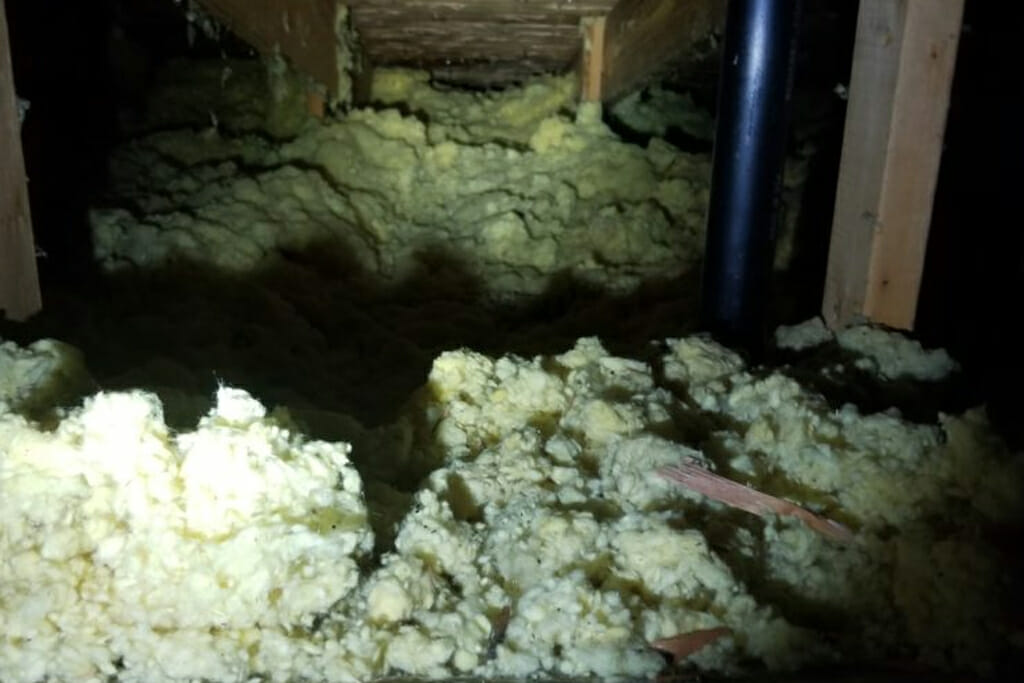
Missing Drip Edge
Drip edge is now required by roof building code in most places, especially here in Colorado. On an older roof you might see a drip edge on the eaves (gutter edge) but not on the rakes. On a really old roof, you won’t see drip edge at all. The eave drip edge and the rake drip edge are designed slightly differently due to how they aid in diverting water away from your fascia and soffits.
The eave drip edge is either a 2″ x 2″ or 2″ x 4″ piece of metal, 10′ long. Depending on your roof style and slope, it will either be bent at 120 degrees or 90 degrees. It is designed to sit on top of the decking of your roof but under the underlayment, then it bends over the edge of your roof and inside your gutter. This helps to prevent water from getting behind your gutter where it can rot your fascia, get inside your soffit, or cause your gutters to pull away from your fascia.
The rake drip edge, called “D-Style”, is a 2″ x 4″ piece of metal, 10′ long. It is designed with a lip to prevent water from running down the face of your fascia along your non-gutter edges.
Water draining issue will reveal themselves in swollen or saturated fascia boards.
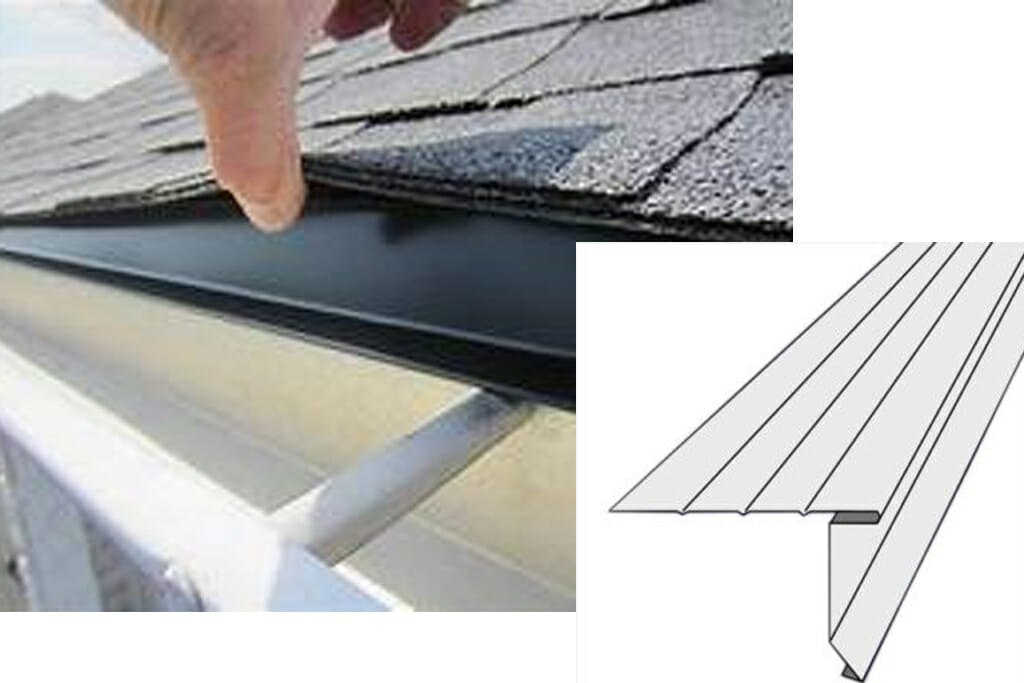
 (720) 670-0265
(720) 670-0265
